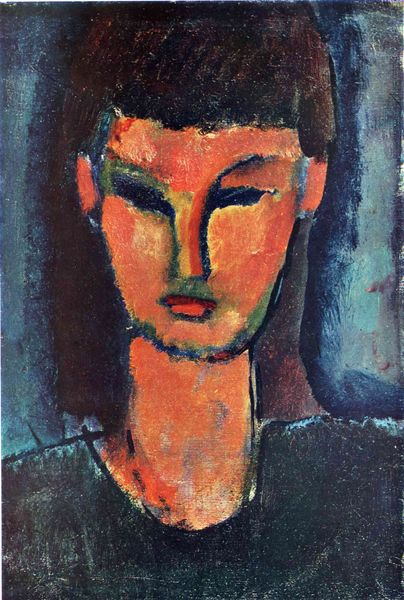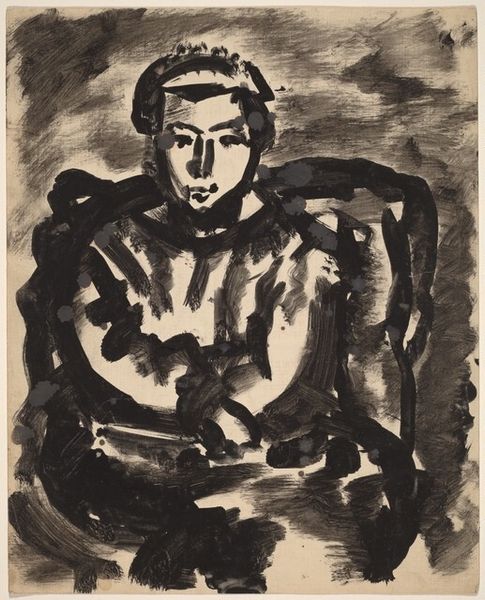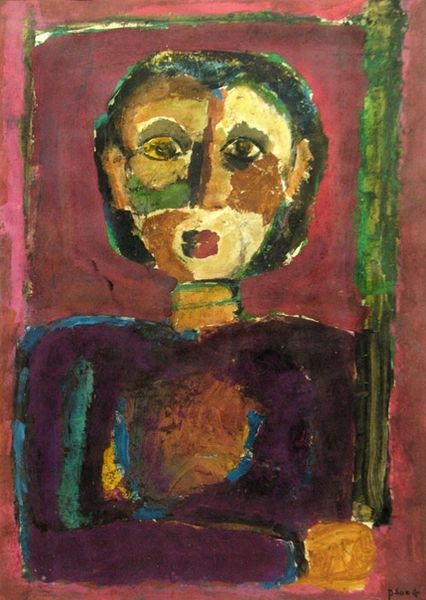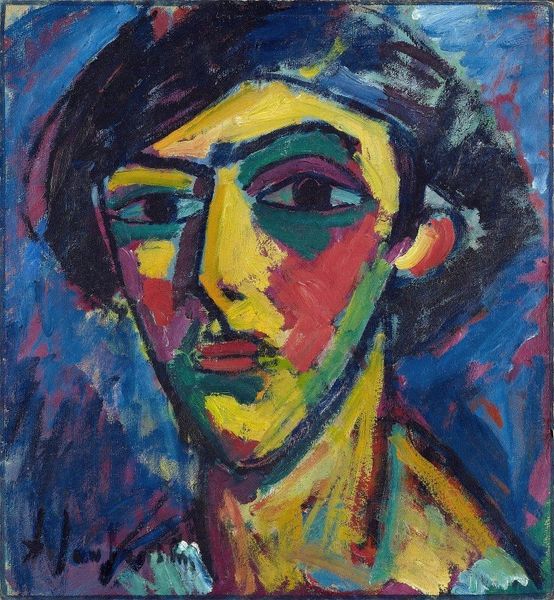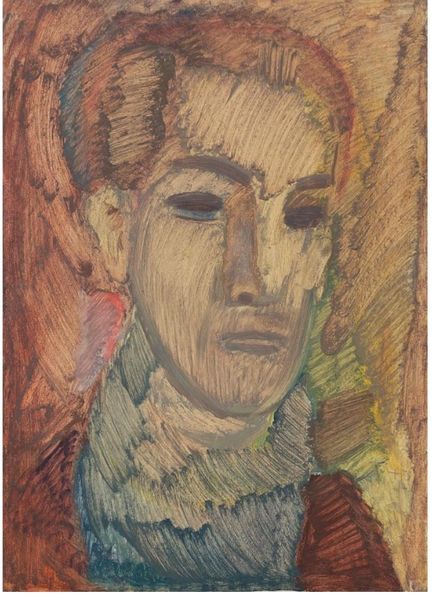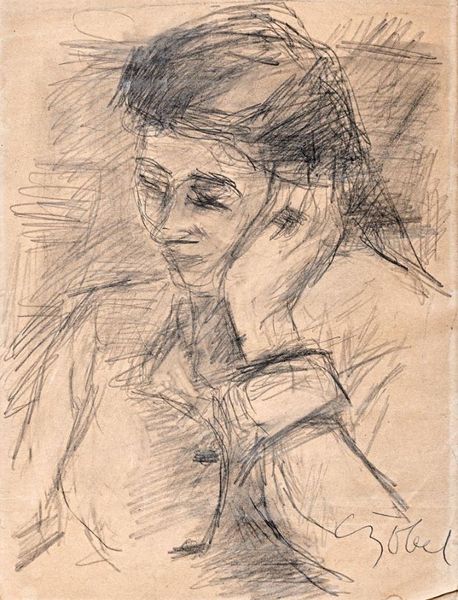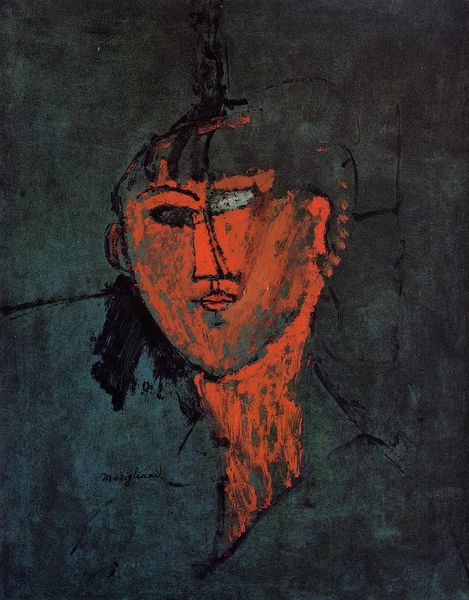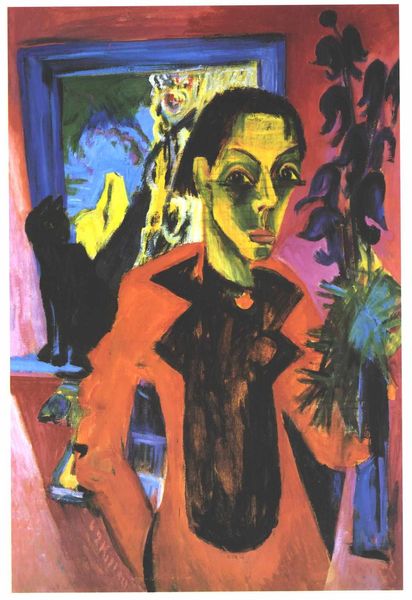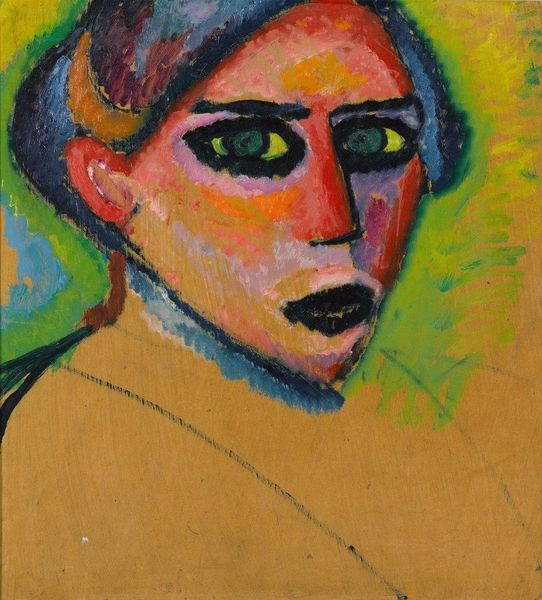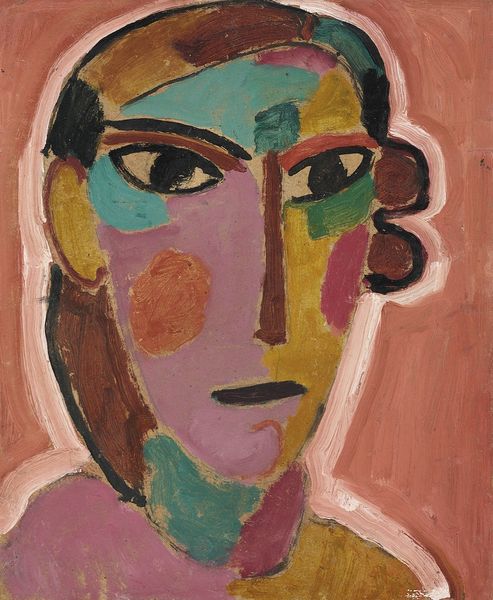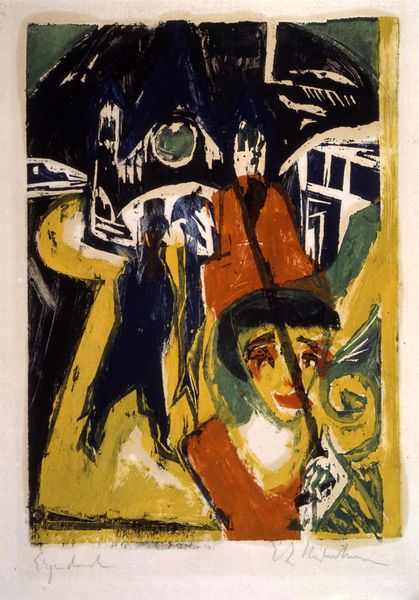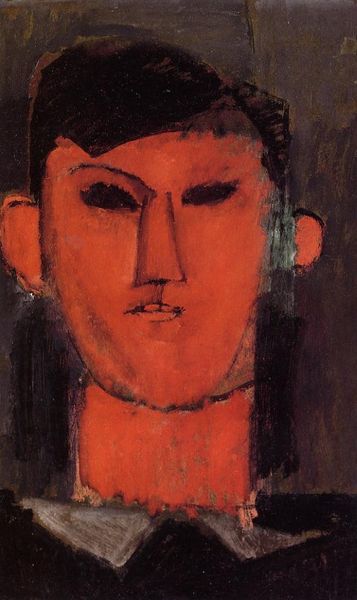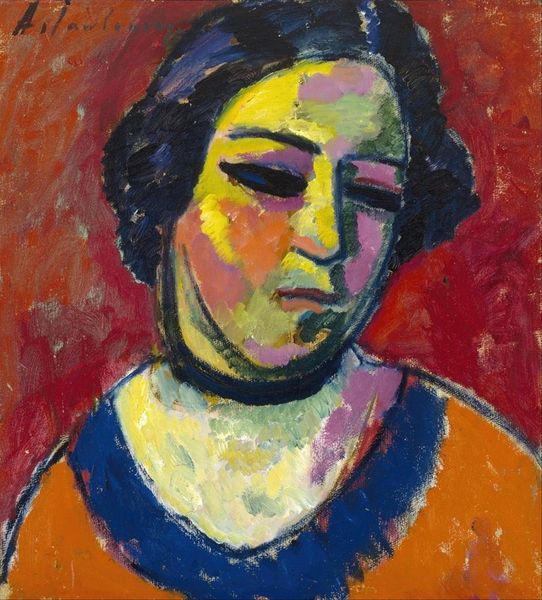
Copyright: Endre Balint,Fair Use
Curator: The work before us is Endre Balint's "Self-Portrait," created in 1942 using mixed media on paper. Editor: It strikes me as intensely personal, almost raw. The stark contrast between the dark, bold strokes and the muted palette creates a feeling of unease. Curator: Indeed. Balint was living in politically turbulent times in Hungary, under increasing pressure from fascism. This self-portrait, made during those fraught years, reflects not just personal introspection, but also the broader anxieties of a society on edge. Editor: The almost absent eyes are compelling. The emptiness denies us a direct connection with the subject. It directs focus on the marks themselves, making us hyper-aware of the artistic choices Balint makes in portraying himself. Curator: And it's vital to consider the influences of German Expressionism at play here. This portrait, similar to works by Kirchner and Heckel, highlights the psychological dimension and emotional rawness inherent within Expressionist art. The war was raging across Europe and there was growing Nazi influence, leading Balint and other artists towards finding this expressive outlet for this collective feeling of chaos. Editor: Exactly, it's that visual shorthand, those visible, expressive brushstrokes that transmit the emotional charge directly to the viewer. There’s no attempt to soften the reality of the era through classical portraiture. It presents you with the artist’s soul laid bare using visual components. Curator: Moreover, consider the constraints artists faced during wartime. Scarce resources likely influenced Balint's choice of more accessible media, impacting the texture and intimacy that the work projects to contemporary viewers. Editor: A simple decision to use paper and ink, in combination with that style choice makes it such an immediately haunting image. Even without knowing anything of its history you can sense the emotional distress behind this picture just based on how its put together. Curator: A truly compelling artwork to remind us of the role of the individual during times of crisis, and the artist’s vital function within it. Editor: I concur; it really gives us a strong understanding on just what he wanted to present when creating such an immediate portrait.
Comments
No comments
Be the first to comment and join the conversation on the ultimate creative platform.
